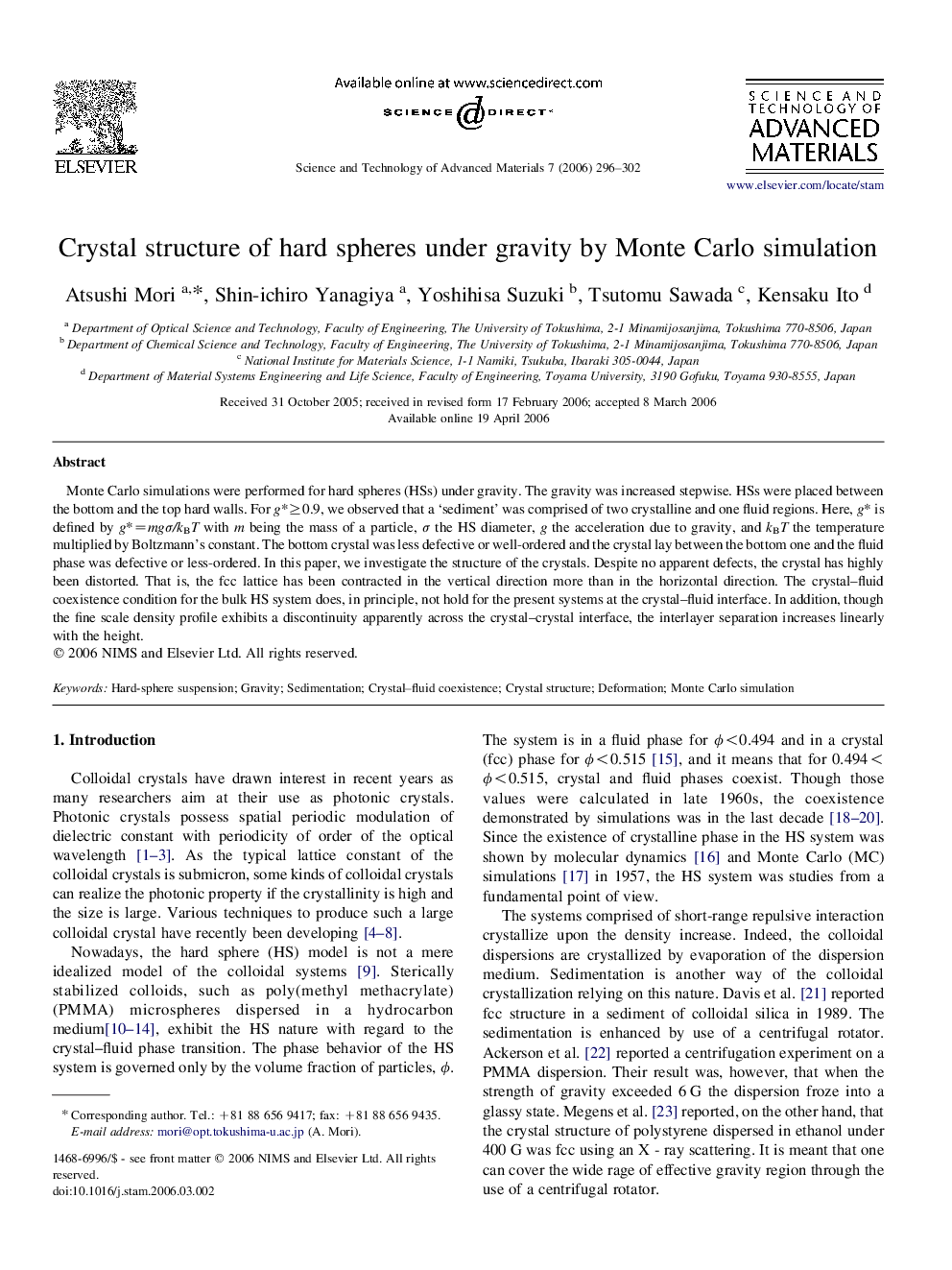| Article ID | Journal | Published Year | Pages | File Type |
|---|---|---|---|---|
| 1590857 | Science and Technology of Advanced Materials | 2006 | 7 Pages |
Abstract
Monte Carlo simulations were performed for hard spheres (HSs) under gravity. The gravity was increased stepwise. HSs were placed between the bottom and the top hard walls. For g*â¥0.9, we observed that a 'sediment' was comprised of two crystalline and one fluid regions. Here, g* is defined by g*=mgÏ/kBT with m being the mass of a particle, Ï the HS diameter, g the acceleration due to gravity, and kBT the temperature multiplied by Boltzmann's constant. The bottom crystal was less defective or well-ordered and the crystal lay between the bottom one and the fluid phase was defective or less-ordered. In this paper, we investigate the structure of the crystals. Despite no apparent defects, the crystal has highly been distorted. That is, the fcc lattice has been contracted in the vertical direction more than in the horizontal direction. The crystal-fluid coexistence condition for the bulk HS system does, in principle, not hold for the present systems at the crystal-fluid interface. In addition, though the fine scale density profile exhibits a discontinuity apparently across the crystal-crystal interface, the interlayer separation increases linearly with the height.
Related Topics
Physical Sciences and Engineering
Materials Science
Materials Science (General)
Authors
Atsushi Mori, Shin-ichiro Yanagiya, Yoshihisa Suzuki, Tsutomu Sawada, Kensaku Ito,
